Ghana, Togo and Benin: Voodoo Festival
14 Days / 13 Nights
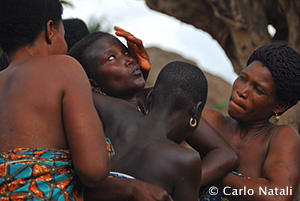
Duration: 14 days
Area: Ghana, Togo, Benin
Style: cultural tours
Comfort Level:![]()
![]()
![]()
![]()
![]()

GHANA, TOGO AND BENIN:
VOODOO FESTIVAL
14 DAYS / 13 NIGHTS
January 10th is always a very special day in Benin, a day for celebrating ancestral cults.
In particular all the Voodoo's adepts meet in Ouidah and then convey in a long procession
to the Door of No Return, some on foot while others by motorbike or “taxi-brousse”.
They are all dressed up in traditional costumes, white being the dominant colour.
The Festival reaches its peak with the arrival of the Dagbo Houno, the chief “feticheur”.
Dances, libations, masks and some official speeches are all part of the morning programme.
Our fantastic cultural odyssey then heads inland,
through northern savannah. We discover the Taneka
tribe on a rocky mountain, the Tamberma people
with their fairy-tale clay castles and finally we enter
the Ashanti kingdom in Kumasi. We end our tour exploring the former Slave Coast,
with its haunting European forts.
One of the most complete and spectacular tours in West Africa.
Great experience combined with the choice of good accommodation.
For travellers who want to get acquainted with this incredible region … and love Africa!

| Day 1 | Arrival in Lome (Togo) and transfer to the hotel - TOGO |
| Day 2 | Fetish market, from Lomé to Ouidah (150 km - 3 hrs)- TOGO & BENIN |
| Day 3 | Voodoo festival, Ouidah - BENIN |
| Day 4 | Royal Palace, from Ouidah to Dassa (250 km – 5 hr) - BENIN |
| Day 5 | Fetish hills, from Dassa to Natitingou (350 km – 6 hr) – BENIN |
| Day 6 | Adobe castles, from Natitingou to Defale (100 km – 3 hr) - BENIN & TOGO |
| Day 7 | Fire Dance, from Defale to Sokode (120 km – 3 hr) - TOGO |
| Day 8 | Witches, from Sokode to Tamale (270 km – driving time 6 hr) - TOGO - GHANA |
| Day 9 | Sacred monkeys, from Tamale to Techiman (290 km – driving time 6 hr) - GHANA |
| Day 10 | Ashanti, from Techiman to Kumasi (130 km – driving time 4 hr) - GHANA |
| Day 11 | Golden Kingdoms, Kumasi (transfers) – GHANA |
| Day 12 | Slaves’Castles, from Kumasi to Anomabu (250 km – driving time 4 hr) – GHANA |
| Day 13 | Elmina, Anomabu – GHANA |
| Day 14 | Metropolis, from Anomabu to Accra (180 km – driving time 3 hr) – GHANA |
Detailed Itinerary
Day 1: Lome, Gulf of Guinea - TOGO
Arrival in Lome (Togo) and transfer to the hotel.
Meals: free
Overnight: Hotel Sarakawa or similar (all rooms ensuite and with aircon)
Day 2: Fetish market, from Lomé to Ouidah (150 km - 3 hrs)- TOGO & BENIN
Lomé city tour. Lomé, the vibrant capital of Togo, is the only African city which was a colony of the Germans, the British and the French. It is also one of the few capitals in the world bordering with another nation. These elements have led to the development of a unique identity, reflected in the life-style of its inhabitants and in the architecture of the town: Lomé is indeed a cross point for people, trade and cultures, a cosmopolitan city in small size. We will visit: the central market with its famous “Nana Benz”, the women in control of the market of the expensive “pagne” (=cloth) coming from Europe and sold all over West Africa (unfortunately the market has been partially destroyed by fire); the colonial buildings in the administrative quarter where the flavour of colonial time is still very present; and the fetish market where we can find an eclectic assortment of all the necessary ingredients for love potions and magical concoctions.
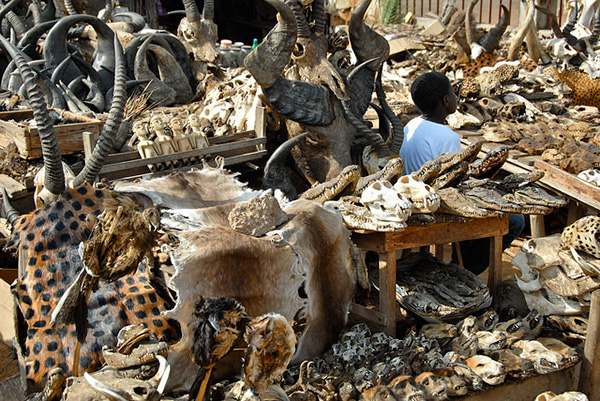
We later move inland and step into voodoo world. Meeting with a traditional healer - traditional healers treat their patients combining voodoo rites with their deep knowledge of ancestral herbs. Treatments are believed to be effective for almost all diseases, especially for insanity. The endless list of voodoos shows the endless powers concentrated in their impressive shrines!

Meals: B – L - D
Overnight: Hotel Casa del Papa or similar, ocean front bungalows, wild beaches, swimming pool. (all bungalows ensuite with aircon)
Day 3: Voodoo festival, Ouidah - BENIN
Every 10th of January is a national celebration day in Benin, honouring traditional religion and all cults associated with it. Ouidah in particular is where dozens of voodoo ceremonies are held, calling thousands of adepts, traditional chiefs and fetish priests.

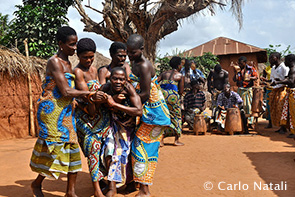
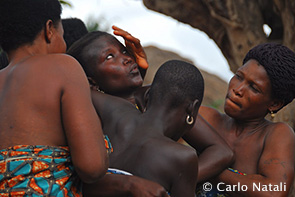
Ouidah was conquered by the Dahomey army during the XVIII century to become one of the main slave ports. Today the town enjoys an Afro-Brazilian architecture, and the python temple faces the Catholic Cathedral. The laid back attitude of the locals blends in harmoniously with the thunder of the distant waves and the rhythm of the drums - a timeless atmosphere very well described by Bruce Chatwin in his book "The Vice-Roy of Ouidah". On foot we visit the Python Temple and the Portuguese Fort, now a museum on the history of Ouidah and on the slave trade. We then end our city tour by following the “slave road” to the beach, the point of “no return” where slaves used to board ships.
As per the program of festivities, we will choose the best sites. The festival takes place in the entire region around Ouidah.
Meals: B – L - D
Overnight: Hotel Casa del Papa or similar, ocean front bungalows, wild beaches, swimming pool. (all bungalows ensuite with aircon)
Day 4: Royal Palace, from Ouidah to Dassa (250 km – 5 hr) - BENIN
We cross Lake Nokwe with a motorized boat to reach Ganvié, the largest and most beautiful African village on stilts. The approximately 25,000 inhabitants of the Tofinou ethnic group build their wooden huts on teak stilts. Fishing is their main activity. Ganvié has managed to preserve its traditions and environment despite the long-lasting human presence in a closed setting; and the lake is not over-fished. Daily life unfolds in the dugout canoes that adults and children row with ease using brightly coloured paddles. Aboard these canoes, men fish, women expose goods at the “floating market”, children go to school and play.

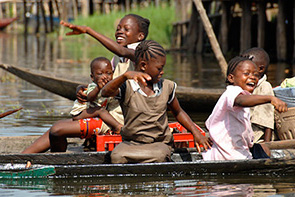

Once returned to the mainland we drive to Abomey where we visit the Royal Palace. The walls of the palace are decorated with bas-reliefs representing symbols of the ancient Dahomey kings. At the height of power, the King has up to 4.000 wives living in the harem. Nowadays the royal palace is a museum, listed in the UNESCO World Heritage, it displays items belonging to the ancient kings: thrones, cult altars, statues, costumes, and weapons. A Kingdom whose economy was for a long time based on the slave trade: a permanent state of war made it possible for the kings to capture thousands of prisoners whom then they sold as slaves. The royal army included a female battalion feared for its boldness and cruel war behaviour. In the centre of the royal courtyard, we discover a temple built with a mixture of clay, gold dust kneaded with the blood of thousands human sacrifices.
Meals: B – L - D
Overnight: Hotel Jeko or similar (all rooms ensuite and with aircon)
Day 5: Fetish hills, from Dassa to Natitingou (350 km – 6 hr) – BENIN
Today is a long but intense day. First stop will be at Dankoli Fetish, a unique shrine for ancient animistic cults still practiced. Thousands of short sticks are pushed in and all around the fetish as testimony of the countless prayers for a good harvest, a happy wedding, an easy delivery, success at school etc. Once the prayers are answered, people come back to sacrifice what they had promised. Fresh traces of sacrifice, palm alcohol and oil on the fetish are witnesses of the many prayers and requests been fulfilled.
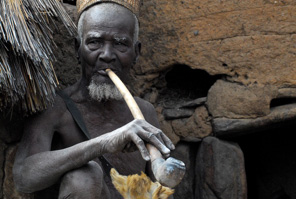 In the afternoon we discover a few old Taneka villages located on a mountain with the same name. The villages are made up of round adobe huts covered with a conical roof protected on the top by a terra cotta pot. The upper part of the village is inhabited by the young initiated and by the fetish priests who only cover themselves with a goat skin and always carry a long pipe. This ethnic group has been living on an archaeological site for centuries and it looks as if the first inhabitants (from Kabye tribe origins) moved to the mountain during the IXth century. Since then, other ethnic groups have joined thus forming melting-pot where even though each group kept its own cults and initiation rites, common religious and political institutions were defined.
In the afternoon we discover a few old Taneka villages located on a mountain with the same name. The villages are made up of round adobe huts covered with a conical roof protected on the top by a terra cotta pot. The upper part of the village is inhabited by the young initiated and by the fetish priests who only cover themselves with a goat skin and always carry a long pipe. This ethnic group has been living on an archaeological site for centuries and it looks as if the first inhabitants (from Kabye tribe origins) moved to the mountain during the IXth century. Since then, other ethnic groups have joined thus forming melting-pot where even though each group kept its own cults and initiation rites, common religious and political institutions were defined.
As we wander around the villages along alleys bordered by rocks with ancient and mysterious carved marks, only witnesses of populations who in the past have lived in these places. We may come across young initiated, wearing only with a cover sex and magical amulets, or elder fetishes priest wearing a skin. Tanekas believe that in order to “become” a man, it is necessary to combine time, patience and many sacrifices. Initiation is a lifetime process until life itself becomes a rite of passage, therefore life should not be conditioned by a “before” and an “after” but rather as following a continuous path.

Meals: B – L - D
Overnight: Hotel Tata Somba or similar (all rooms ensuite and with aircon)
Day 6: Adobe castles, from Natitingou to Defale (100 km – 3 hr) - BENIN & TOGO
We enter the land of Somba & Tamberma who live in adobe fortified dwellings. The shape is like small medieval castles. They are one of the most beautiful examples of traditional African architecture. Their style impressed Le Corbusier vanguard architect that described it as «sculptural architecture». In fact, the houses are built by hand, layer of clay after layer, adding round mud balls and shaping them as per the plan of the house. A kind of sensual gesture mixing strength, care and beauty. Large shrines- of phallic form - at the entrance of their homes show their animistic believes. With the permission granted to us by the elders we enter their homes to better understand their way of life.
Actually their houses are projections of their cosmology: the ground floor, with its darkness, represents death and is the place of the ancestors; the second floor, open to the sky, represents life and is the place where grandmothers keep babies until they “find out” which ancestor has come back as the new life; only then the baby will be allowed to come down from the terrace. All - family, food supplies and stock - are kept inside the fortified house, for safety reasons in case of attack by enemies. For centuries these populations have been seeking refuge on the Atakora Mountains to escape Muslim slave traders coming from the north. Togo border.
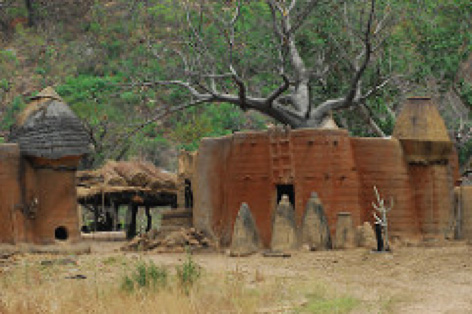
Meals: B – L - D
Overnight: Hotel Defalé or similar (all rooms ensuite and with aircon)
Day 7: Fire Dance, from Defale to Sokode (120 km – driving time 3 hr) – TOGO
Half a day easy walking to discover Kabye and Moba villages living on Defale mountains to experience a spontaneous and friendly welcome.
Drive in the mountains will bring us to encounter the Kabye ethnic group. Kabye dwellings called «Soukala» are composed by several adobe huts joined by a wall. Each dwelling is the domain of a patriarchal family. In the villages located at the top of the mountains, women are potters using an ancestral technique without the wheel while men are blacksmiths still working iron with heavy stones instead of hammers and anvil as in the early down of Iron Age. We follow the process of shaping a hoe.
In the evening, we arrive at the villages of Tem tribe to discover the fire dance. At the centre of the village a large fire lights up the silhouette of the participants. They dance to the hypnotic beat of the drums eventually leaping into the glowing embers, picking up burning coals, passing them over their bodies and even putting them in their mouths and swallowing them, all this without hurting themselves or showing any sign of pain. It’s difficult to explain such a performance. Is it matter of courage? Self-suggestion? Magic? Maybe it really is the fetishes that protect them from the fire.

Meals: B – L - D
Overnight: Hotel Central or similar (all rooms ensuite and with aircon, simple)
Day 8: Witches, from Sokode to Tamale (270 km – driving time 6 hr) – TOGO - GHANA
Ghana border. Dagomba tribe live in this savanna region. They build round clay huts with a thatched roof. The village chief’s house is characterized, at the entrance of its compound, by a large hut with a central pole supporting the roof. It is here that the council of elders meets. The entrance is framed by pieces of burnt coloured clay.
In one of these villages, we meet a very large settlement of … witches, exiled from their villages. We will discuss with them about their life in the village and how they are protected by a special shrine, in charge of “cleaning” their spirits from bad wills.
Meals: B – L - D
Overnight: Modern City Hotel or similar (all rooms ensuite and with aircon)
Day 9: Sacred monkeys, from Tamale to Techiman (290 km – driving time 6 hr) – GHANA
Transfer to the South. Stop to visit Fulani encampments.
In the Brong Afo region we will leave the main road and follow a track to a sacred forest. The population living there considers the Monas and Colobus monkeys as their totems. As result we have the largest community of these species in the world.
Walk in the forest trough giant trees and an emerald green light. We will meet plenty of sacred monkeys.
Meals: B – L - D
Overnight: Encom Hotel or similar (all rooms ensuite and with aircon)
Day 10: Ashanti, from Techiman to Kumasi (130 km – driving time 4 hr) – GHANA
Kumasi is the historical and spiritual capital of the ancient Ashanti Empire. Ashanti was one of the most powerful empires and kingdoms in Africa from 1670 to 1957 when British Gold Coast become the independent Ghana. The tribute paid today to the Asantehene (King) is the best evidence of their past splendour and strength and the still strong Ashanti pride. With nearly two million inhabitants, Kumasi is a sprawling town with a unique central market, one of the largest in Africa. All kinds of Ashanti craft (leather goods, pottery, beads, textiles called Kente cloth, etc.) are found here, along with just about every kind of tropical fruit and vegetable.
The program includes a visit to the Ashanti Cultural Centre: a rich collection of Ashanti artefacts housed in a wonderful reproduction of an Ashanti house. In the afternoon we participate – if available – in a traditional Ashanti funeral, attended by mourners wearing beautifully red or black togas. We say “funerals” but it means a “festive” celebration: thanks to this ceremony the deceased return as an ancestor and will protect his family. Relatives and friends gather, socialize, and celebrate his/her memory. The chief arrives surrounded by his court under the shade of large umbrellas while drums give rhythm to the dancers whose intricate moves are highly symbolic in war and erotic meanings.

Meals: B – L - D
Overnight: Miklin Hotel or similar (all rooms ensuite and with aircon)
Day 11: Golden Kingdoms, Kumasi (transfers) – GHANA
In the morning continuation of the tour of Kumasi, with the visit to the Royal Palace Museum hosting a unique collection of gold jewels worn by the Ashanti court.
One cannot visit Kumasi and the Golden Ashanti kingdom without meeting one of its many traditional kings! We are privileged to be allowed into the courtyard of a great Ashanti chief. Wrapped in traditional cloth and adorned with antique solid gold jewels, he will take a seat under a large colored umbrella and discuss his role as a traditional chief in modern Ghana.
In the afternoon visit to a few Ashanti villages with traditional clothing and carving.
Meals: B – L - D
Overnight: Miklin Hotel or similar (all rooms ensuite and with aircon)
Day 12: Slaves’ Castles, from Kumasi to Anomabu (250 km – driving time 4 hr) – GHANA
Drive to the coast. The coast of Ghana (formerly known as Gold Coast) has more than 50 ancient forts and castles, reminiscent of the ancient gold, ivory and slave trade.
Cape Coast castle was built by the Swedish in 1653. From 1657 to 1664 it changed hands many times as it was conquered by the Danes, the Dutch, the Fanti (a local tribe), the Swedes and finally the British. Today, it hosts a museum on the history of slave trade.
In Cape Coast, we will also visit Fort William, hosting a lighthouse. From the top of the castle, you will enjoy a magnificent view of the town.


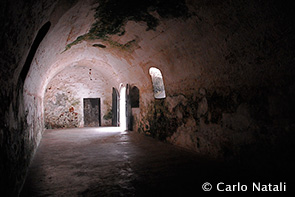
Meals: B – L - D
Overnight: Anomabu Beach Resort or similar, Ocean front resort with comfortable bungalows on the beach (all bungalows ensuite and with aircon)
Day 13: Elmina, Anomabu – GHANA
A few kilometres north of the coast, in the middle of a rainforest, we will discover the Kakum National Park. This park gives you a great opportunity to observe the forest from above as Kakum has a canopy walk hung high up in the trees. The Kakum canopy walkway is the longest and highest rope bridge in the world. Walking between 120 to 150 feet above the ground, you will enjoy an incredible view of the rain forest. At this height, instead of revealing their trunks, the trees offer a breath-taking view of their canopies and look as if they were trying to touch the sun and sky above.
Then we reach Elmina Castle, the oldest European building in Africa, erected by the Portuguese in the 15th century. At different times the castle has been used as a warehouse to trade gold, ivory, and eventually slaves. The castle we visit today is the result of successive extension works and is recognized as a UNESCO World Heritage site. The old Dutch Cemetery in Elmina goes back to 1806. Outside the castle, there is a spectacular fishing village with lots of large colourful fishing boats - every day these large wooden pirogues conducted by skilled fishermen across strong ocean waves and currents, “fighting” to earn a living. In the old town we will see the Posuban, the shrines of the ancient “Asafo companies” - the warriors who used to put their offerings on the large colourful statues. The alleys in the old town have a very lively atmosphere, bringing us back to a time when Elmina was a busy colonial town.
Meals: B – L - D
Overnight: Anomabu Beach Resort or similar, Ocean front resort with comfortable bungalows on the beach (all bungalows ensuite and with aircon)
Day 14: Metropolis, from Anomabu to Accra (180 km – driving time 3 hr) – GHANA
Drive to Accra.
Accra, the capital of Ghana, has kept its unique identity despite the fast-paced development of the last decades with its modern buildings and large avenues. The luxuriant administrative area, punctuated with elegant villas built during the first half of the 19th century, reminds us that was the most flourishing colony in Africa.
We explore James Town historic neighbourhood, inhabited by Ga people. Facing the Ocean is where native people life fully unfolds: a village surrounded by the city! Here all economic activities follow very different rules from the ones governing “the city” (business area), just a few hundred meters away. We continue with the visit of a workshop specialized in “fantasy coffins”. These unique handcrafted coffins can reflect any shape: fruits, animals, fish, cars, airplanes…. the only limit being imagination! Started in Accra, these flamboyant coffin designs are by now collected worldwide and exposed in museums.

In the evening transfer to the airport for the flight out.
Meals: B – L
Day-use: Rooms in day-use till 18.00 hrs (all rooms ensuite and with aircon)
Day 1: Hotel Sarakawa or similar, |
|
Day 2 - 3: Hotel Casa del Papa or similar, |
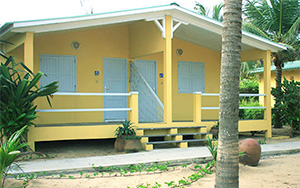 |
Day 4: Hotel Jeko or similar, |
|
Day 5: Hotel Tata Somba or similar, |
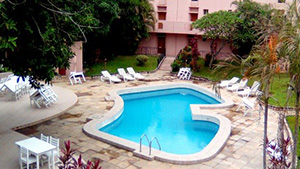 |
Day 6: Hotel Defalé or similar, |
|
Day 7: Hotel Central or similar, |
|
Day 8: Modern City Hotel or similar, |
|
Day 9: Encom Hotel or similar, |
|
Day 10 - 11: Miklin Hotel or similar, |
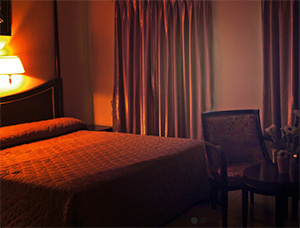 |
Day 12 - 13: Anomabu Beach Resort or similar, |
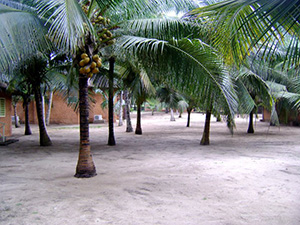 |




